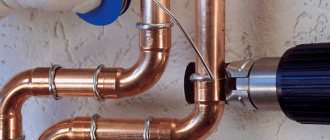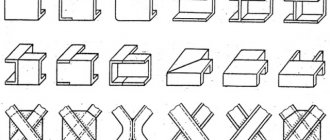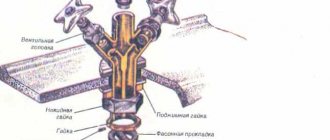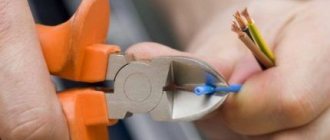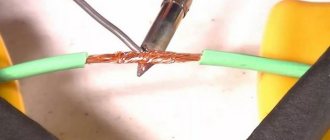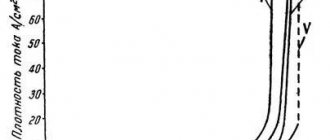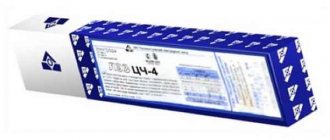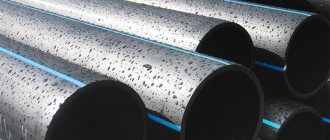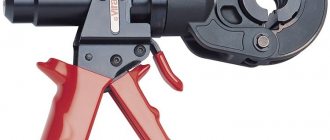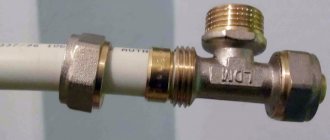It is clear that you can connect two or three wires together by soldering them, but this is the most difficult way, because you need a soldering iron, a socket, solder, flux... Of course, the easiest way to connect the wires is to twist them. If you know how to do it correctly, such a connection can be quite mechanically strong and provide good electrical contact. Check out the photo below. It shows the method used to join cables together with high mechanical strength. We simply strip the insulation and twist the wires together, wrapping them with electrical tape or heat shrink.
This method however has its drawbacks. Making such connections is very tedious, especially if there are to be many of them in an electrical installation. In addition, the length of the cable used for connection is long, which indicates how much less wires we will need for installation if there are really a lot of such connections, or how much we will have to pay to connect the system. What is important is that under no circumstances can such connections be made under voltage, which sometimes cannot be turned off and you have to work under current.
Precautionary measures
Wires often vary in size and type of conductor. The thinnest wire in the entire system must be able to carry the maximum current that flows in the circuit. In addition, the connection between two wires can further increase the series resistance, especially if it is not a good one or, for example, it does not match the diameter of the wire. This can cause the connection to overheat, which is often observed by inexperienced electricians.
Depending on the voltage and current, different standards apply for these types of connections. These standards exist for a reason, and if you ignore them, you are doing the job at your own peril and risk. Sometimes it ends in a very unpleasant way. A typical example is the possibility of a fire due to the use of an unsuitable electrical connector, even if the connector is located in a completely different location than the fire that occurred.
Now let's look at the most popular and frequently used cable connectors for connecting electrical wires together.
Methods for connecting conductors
There are several options for connecting conductors:
- twisted;
- soldering;
- crimping
- using ready-made devices.
Twisting and crimping is a cold connection method. Soldering is carried out at high temperatures. Each method has positive and negative aspects, which we will discuss below, starting with the simplest connection - twisting.
Twist
This method is not considered correct and not a single competent electrician recognizes it. The reason is the fragility of the connection, which can become loose when touched or vibrated. This connection is especially unacceptable for large cross-section conductors or when three single or multi-core wires are in contact. This option can be used as a temporary connection of lighting lines.
Technologically, the twist looks like this. The conductors are stripped to a length of up to 3 cm from oxides on the surface, and then twisted together. It is necessary to apply insulation to the twisted area.
Soldering and welding
Another method is soldering or welding, which are perhaps the most reliable but most technically complex processes. The soldering technology begins similarly to the previous method. The surface of the conductors is also cleaned, and then they are either twisted or pressed tightly against each other. Afterwards they are heated and solder is supplied, which can be either soft or hard.
Among the soft ones, tin-lead or silver solders with a low silver content are well known. Refractory materials include copper-phosphorus, silver, brass, and zinc. Hard grades of solder are more often used when welding copper wires in industrial enterprises, since they require heating to very high temperatures, in contrast to soft grades, which melt well when heated with a conventional soldering iron. To improve the quality of soldering, fluxes or preliminary degreasing of contacts with acid are used.
Electrical terminal block
If you want to connect several different electrical circuits together, you can use an electrical terminal block as shown in the figure. The topic of terminal blocks is very broad - this is a huge group of connectors that would be difficult to cover within one article, so let's just study the photo - most of us have already had the opportunity to use this type of connection when installing chandeliers and lamps.
Connection with screws
This method is used to join types of metals such as copper and aluminum. The screw terminal block is presented in the form of a brass tube with two holes and a thread into which screws are inserted, which firmly compress the wire placed in the tube. Due to their small size, screw terminal blocks are used when connecting wires in junction boxes.
Nuts for cables
These types of connectors (Molex 0191600039) come in a variety of colors and sizes. They are very popular in electrical installations in different countries. They are used for connections in the indoor energy network. Such a nut consists of a truncated cone made of insulating material with a thread inside.
Using this connection is simple - take two insulated ends of the cord, insert them into the cone and twist. This nut makes it easy to connect even very different wire diameters, and also allows you to connect two, three or four wires at the same time. Provided that all bare conductors are contained within an insulated cone, the connection is completely insulated. However, the connector itself is not very durable and a strong tug may cause it to come loose, which means you should consider whether there might be any mechanical stress in that area. The good thing about this connector is that you can unscrew it to make changes if you wish.
What are distribution boxes for?
There are many factors that speak in favor of the existence of junction boxes:
Wago quick connector
The quick connector (Wago 221) shown in the photo is designed to connect two wires together, but they are available in versions with five simultaneous connections. The insulated cable ends are placed into connectors that snap into place by pressing a lever.
Useful: How to install a dimmer - a switch with a dimmer instead of a regular one
The lever makes it very easy to attach and unfasten the connector - the connection can be reused several times. Additional accessories for Wago connectors are also available, which allow, for example, the entire connector block to be permanently mounted in the housing.
Connectors for wires and cables
Connectors are special devices that facilitate the connection of two or more conductors. There are screw and clamping mechanisms.
Screw terminals
Used to connect wires of different materials and different diameters. An exception is multi-core electrical wires, which are crimped with special lugs. Also, screw clamps can damage aluminum wires, so it is better not to use them for such material.
Screw terminals
Allows you to connect aluminum and copper conductors together. They are easy to connect.
Power clamp
In such clamps, the stripped conductor is placed in the hole to the end. There it is automatically fixed by a pressure plate. Clamps can be used to secure copper and aluminum wires.
Clips
To install the wire, the clip clamp is placed in a vertical position, the wires are inserted inside, and then the clamp must be moved to a horizontal position. Plus, you can make adjustments.
Spring clamps
PPE caps are used as spring clips. Thanks to them, you can quickly make contact between two wires of similar diameters. It is important to choose the correct clamp, otherwise the contact will be unreliable.
Spring terminals
Wago spring terminals ensure reliable contact quickly and efficiently. However, over time, the spring may weaken or overheat.
Connection clamps
There are two types - electrical and electrical. The only difference is the current load. The connection takes place inside the device.
Couplings
It is made in the form of a metal tube. Used for conductors with a cross section of 0.25-16 mm. The wire is fixed by force crimping. Not used for single-core wires.
Spade terminals
Anyone who knows about car wiring has seen what spade terminals look like. Here are photographs depicting such a connector: there is a male version (Panduit DNF18-250-M) and a female version (Panduit DNF14-250FIM-M).
Terminals of this type are clamped onto insulated wires using a special device - a crimping tool. Connectors are available in a wide range of insulation colors. Very often the color is also an indicator of the recommended wire thickness at which the terminal should be crimped.
Typically, part of this connection is attached to the relay or other device block, and the other part is slipped over it and located on the cable, but there are also simple crimp connectors.
When using it, make sure that the entire connection is completely isolated. Special insulating gaskets make this quite reliable. Connectors of this type provide a fairly high resistance to accidental disconnection, even for high tensions.
Welding
Connecting wires using this method is superior to other methods, as it is the most durable and of the highest quality. The essence of this method is that the ends of the wire strands are melted using a welding machine, and upon subsequent solidification, these strands become solid, ball-like, which ensures a fairly strong and durable contact. Welding can be carried out using both direct and alternating current.
What you will need:
- Welding machine (power at least 1 kW)
- Carbon electrode
- Flux (it protects the melt from oxygen)
- Welding mask (goggles)
- Rubber gloves
- Cord brush
Stages of work:
- We remove the insulation and thoroughly clean the conductors to a metallic shine.
- We twist the wires and align them, cutting off the ends.
- Pour flux into the recess of the electrode, then, lowering the twist, press it firmly to the electrode.
- We turn on the welding machine and watch how the ends of the wires melt, turning into a ball.
- Using a metal brush, you need to thoroughly clean the finished ball of flux.
- We varnish and insulate the finished connection.
Plug crimp connectors
These connectors use the same crimping and insulating tools as spade terminals, butt connectors (such as the Phoenix Contact 3240061 connector) are often found in the same manufacturer series as automotive terminals.
This connector is simply a metal tube (sometimes insulated) in which the stripped end of one wire is placed at one end of the tube, crimped, and repeated for the other wire on the other side.
Sleeves
When powerful clamps for several wires are needed, sleeves are used. They are a tinned copper tube or a flat tip with a hole made for fastening.
All connected wires must be inserted into the sleeve and crimped using a special crimper device (crimping pliers). This wire clamp has a number of positive aspects:
- It is very convenient to use lugs with holes when there is a need to secure wire assemblies to housings with screws.
- Crimping at the connection does not increase the resistance.
As you can see, there are a lot of wire clamps, each with its own advantages and disadvantages. Choose based on which wires you need to connect and where the connection will be located. But do not forget that the most important thing in electricity is reliability and safety.
Bullet connectors
The specified connection is not separable. This connection is often heard in the English name: Bullet Connector. The photo shows a pair of Panduit connectors: EBV18-4MB-Q and EBV18-4B-Q.
This type of connection consists of a metal tube in which the cable is clamped on one side, resembling a bullet (sometimes with additional insulation), and on the other, a similar tube into which the so-called “bullet” enters. An electrical wire is also connected to the second tube.
Installation of PPE caps
To connect cables, PPE caps are used. To manufacture this product, polymer materials are used that do not support combustion when ignited and at the same time have electrical insulating properties. These devices can operate safely under a voltage of 600 V.
A steel spring is mounted in the body of the cap, compressing the conductor.
The housing, made of polymers, serves as protection for the connection; in addition, it insulates the junction of the wires. When cutting the insulation, the installer must ensure that the exposed metal does not extend beyond the cap, and at the same time falls into the action zone of the spring. When using PPE caps, there is no need to use additional insulating materials.
Scotchlok connector
Sometimes it is necessary to use an unbroken cable for connection. Of course, you can always cut it and make, for example, a three-way connection. There is a practice for this, which consists of removing a small section of the insulation of the wire and wrapping it with another. However, a much better solution is available - Scotchlock couplings, shown in the picture.
This connector has two tracks. One of them slides along the main wire (insulated), and the other for the butt wire. The entire connector on both wires is covered, which may require the use of pliers, especially with larger gauge wires or thicker insulation. When closing the connector, a special knife is pressed into the insulation, which, after passing through it, touches the inner conductor, closing both wires located in the element. This type of technology (with cut contact insulation) is called IDT.
Is it possible to connect cables by twisting?
According to the rules of the PUE, twisting is prohibited, as it does not provide reliable contact. It can only be used in conjunction with another connection method. It is also unacceptable to use twisting to join two different metals.
Stranded and single-core
When connecting multi-core wires, the following rules should be followed:
- strip the insulation by 4 cm;
- unwind the conductors by 2 cm;
- connect to the junction of untwisted conductors;
- twist the wires only with your fingers;
- You can tighten the twist using pliers;
- bare wires are insulated with special tape or heat shrink tubing.
Twisting solid wires is much easier. They need to be stripped of insulation, twisted by hand along the entire length, then clamped with pliers and insulated.
Twisting methods
You can do twisting in different ways. It can be made by branch, parallel or series connection. Also, to improve the reliability of contact, caps and clamps are additionally used.
